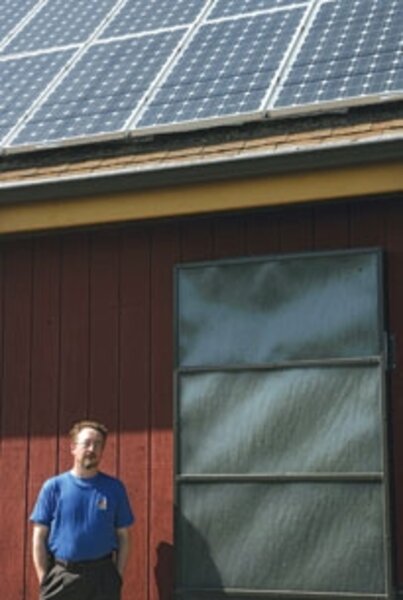Earth Talk: Compare costs of alternative energy
Loading...
Q: I’d like to know the relative electricity cost of utility-scale solar and wind plants versus rooftop residential solar. In other words, how can I know whether to subsidize my utility’s alternative energy plant or renovate my own home?
– Randy Wilson, Flagstaff, Ariz.
A: Making such a determination is complex, but you could start with “In My Backyard,” a new online tool by the National Renewable Energy Laboratory. You need to know your electricity usage and what size solar photovoltaic (PV) system or wind turbine you could install. Then, using Google Earth maps and data on the amounts of sunshine and wind at your location, the tool will estimate the electricity you could get from a certain size wind turbine or PV array installed on your property.
The costs to install renewable energy systems vary greatly by location, warn researchers at the Lawrence Berkeley National Laboratory. And kilowatt-hour costs vary by utility, as do state and local financial incentives. One piece of good news: The federal investment tax credit allows for 30 percent of the cost of your system to be deducted from your federal tax bill and is good through 2016.
Comparing the cost of going it alone with that of buying green power through your utility isn’t a simple equation. You can support your utility’s renewable power infrastructure by paying a premium on your electric bill, or you can buy renewable energy certificates – also known as green tags – even if your utility doesn’t offer green power (green tags inject renewable energies into the grid even if they don’t come back to you via your own utility).
Compare the costs of those programs over the same time period with the cost of building and maintaining your own system (minus any installation credits and/or revenues from selling your excess electricity back to the utility). That gives you the relative costs and return on investment.
Another question is whether your home system can continue to produce energy more cost-effectively than your utility, as it brings more green energy sources into its mix. Lawrence Berkeley says no. A February 2009 report summarizing the costs of PV from 1998 to 2007 concluded that larger systems averaged a 25 percent lower cost than the smallest ones. The same is true for wind power, says the American Wind Energy Association. The group’s February 2005 report calculates that a large wind farm can deliver electricity at nearly 40 percent less than a small one.
The bottom line: Today, with renewable energy sources coming online or about to do so in quantum-leap measures – and at much greater efficiencies than can be achieved privately – the best way may well be to forgo the go-it-alone path and support your utility’s efforts to generate green power not just for your own household but for everyone.
Questions about living green? Send to: EarthTalk, c/o E - The Environmental Magazine, Box 5098, Westport, CT 06881; earthtalk@emagazine.com.


